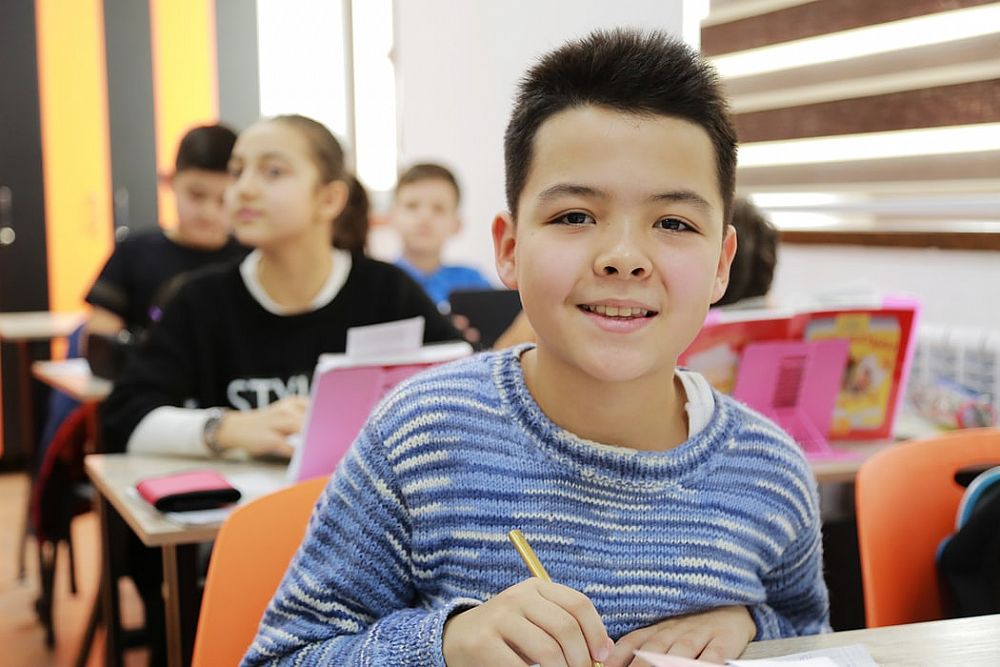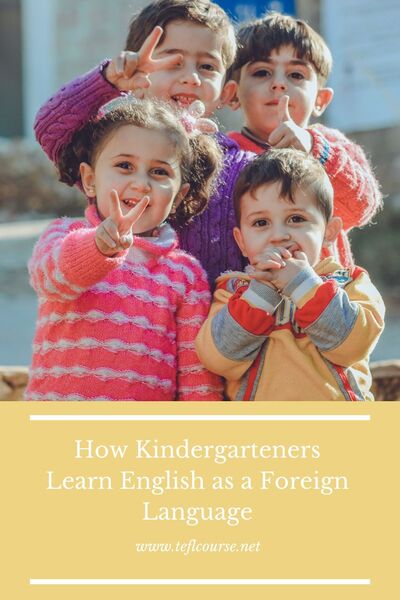How Kindergarteners Learn English as a Foreign Language

Kindergarten students are at the "Beginner" phase of learning English. Therefore, you must treat the students and the learning experience in a fun and appropriate manner. Being kind, friendly, and entertaining is vital for young learners and your rapport as a teacher. Building a good rapport is essential to truly provide the best English course and helping the Kindergarteners progress throughout the semester. Since the students are so young and open to learning, talking only easy, simple words are beneficial to them at the moment. Do not go into further detail in the time being. They are beginners and need to learn the absolute basics before going into further detail about grammar. Your role as a teacher will be to observe, teach, and be a model for the students.
Table of Contents
Kindergarten students are learning the basics of English.
The second phase, Study, is the phase where you learn new vocabulary and correct the students.
To teach Kindergarten students, the teacher must be lively and entertaining.
Do you want to teach English abroad? Take a TEFL course today!
This post was written by our TEFL certification graduate Taylor J. Please note that this blog post might not necessarily represent the beliefs or opinions of ITTT.
Kindergarten students are learning the basics of English.
A simple way to handle a lesson is the ESA format or the "Straight Arrow" lesson. This is when you simply take each phase of ESA in order. Engage, Study, and Activate are the three phases and there are specific activities that can be done throughout each phase. The engage phase is getting the student's to talk English and not correcting them. This is student talk time and allows them to feel comfortable with each other. Good options for the Kindergarteners in this phase could be introductions, I Spy and Matching games. You want to get to know your student as you go through the course, so you can adjust the lessons to their interest. Kindergarteners will be motivated to talk about easy things and things they enjoy doing. The first lesson could go over introductions and describing the things they enjoy doing.
Also Read: How much can I earn teaching English in Greece?
The second phase, Study, is the phase where you learn new vocabulary and correct the students.
When correcting the Kindergarteners, you want to be kind and positive. Being serious and strict will intimidate the students and prevent student talk time. Different activities for the Study phase could include miming, spelling, hangman, drawings, and gap fills. These are good activities to include and involve each student. You want to improve student talk time, so talking about things they enjoy would be a great start lesson. The next phase, the Activate phase, is when you take what the students learned and apply them in realistic activities. These activities could include role-playing, surveys, and story building. Since the students are young, you don't want to complicate the activities, but make them fun and exciting. Get the children wanting to play and participate in the activities.
Also Read: The Best Places for Non-Native English Speakers to Teach English Abroad
One of the most important things to remember, is your physical position as a teacher in the classroom.
You want to use appropriate gestures, eye contact, and voice in the lessons. Standing and sitting in certain situations can be either appropriate or inappropriate. Try not to point at the students and only use their names after the question to keep them all on their toes. It is important to keep in mind the physical grouping of the students, as well. There are pros and cons to each type of grouping. Whole-class grouping creates a sense of belonging and allows the students to interact. However, it can be hard for shy students and reduces student talk time. The pros and cons of having the student's work alone vary, too. This allows the teacher to respond to individuals and provide individual attention but also restricts student-student interaction. Pair-work allows for more student talk time and the teacher has the option of working with pairs. This can be difficult for shy students or student's that don't get along with their partners. It is good to vary the situations and adjust them to the class needs.
To teach Kindergarten students, the teacher must be lively and entertaining.
Kids soak information up like a sponge, but also lose their attention span quickly. You will want to establish a good rapport with the students to show them that you are their friend, but also their teacher. A good activity to do with the children is to do an "ice-breaking" activity. They will love talking about their interests and involving the students to talk to each other will loosen the tension and relax the atmosphere. Get to know your students and know each of their names. Tell them about yourself and relate to them. Get the students to help each other and do not supply everything yourself. You want these students to interact during the lesson, but also discover the lesson for themselves. Teaching Kindergartners is an enriching experience and can be beneficial to them and you.
Do you want to teach English abroad? Take a TEFL course today!
Apply now & get certified to teach english abroad!
Speak with an ITTT advisor today to put together your personal plan for teaching English abroad!
Send us an email or call us toll-free at 1-800-490-0531 to speak with an ITTT advisor today.
Related Articles:
- The 8 Best Countries in Asia for Teaching English Abroad
- Top 10 Cities in Asia with the Highest Demand for English Language Teachers
- 7 Steps to Paying Off Your Student Loans While Teaching English Abroad
- Top 10 Cities in China for Teaching English Abroad
- Two Traveling Teachers Share What It's Like Teaching English Abroad as a Couple




